Honey & Co’s heavenly citrus recipes, from treacle-cured salmon to lemon fizz
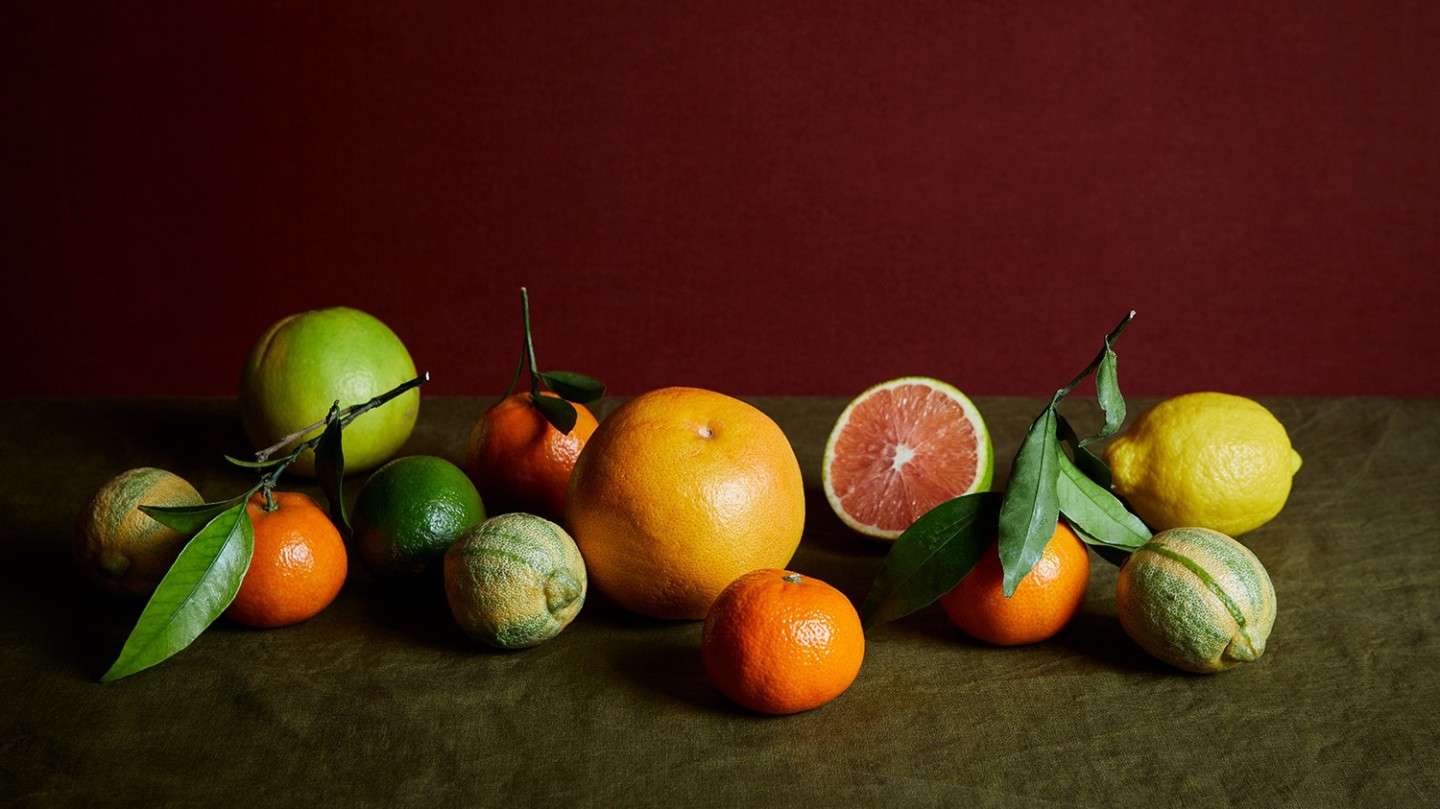
Roula Khalaf, Editor of the FT, selects her favourite stories in this weekly newsletter.
We came to Britain without any Christmas traditions of our own. The ones we have now are borrowed from friends. Our first Christmas here, Ben played board games, took us for a long, cold, glorious walk in Richmond Park and gave us a killer nut-roast recipe.
One year, we joined Karl and his family singing carols and drinking in the streets of Islington. With Polly, we went to a concert by a funky cellist doing pop renditions in a school in Dulwich. And with Rachael, we now host an annual event called “Fakemass”, a pre-Xmas meal for the neighbourhood. There’s a band and too much turkey and, on Rachael’s insistence, both roasties and mash, because that’s how her mum does it.
One year, Bridget gave us a woollen stocking stuffed with gifts: a plastic toy, a notebook, toothpaste, hair cream, socks, some candy and a single, oversized satsuma — along with strict instructions not to “open it” before Christmas morning, just like she did when she was growing up.
We didn’t realise that we were meant to keep the stocking until the next year, when Bridget asked us to bring it back to be refilled. We had to admit to having thrown it away. Instead of being cross, Bridget got us fancier velvet stockings with our names embroidered on them.
Families are not just the ones we were born into, but the people with whom we choose to share our lives. They are made by looking out for one another all year round, by sharing traditions and forming new ones and by little gestures such as starting December 25 with an oversized satsuma.
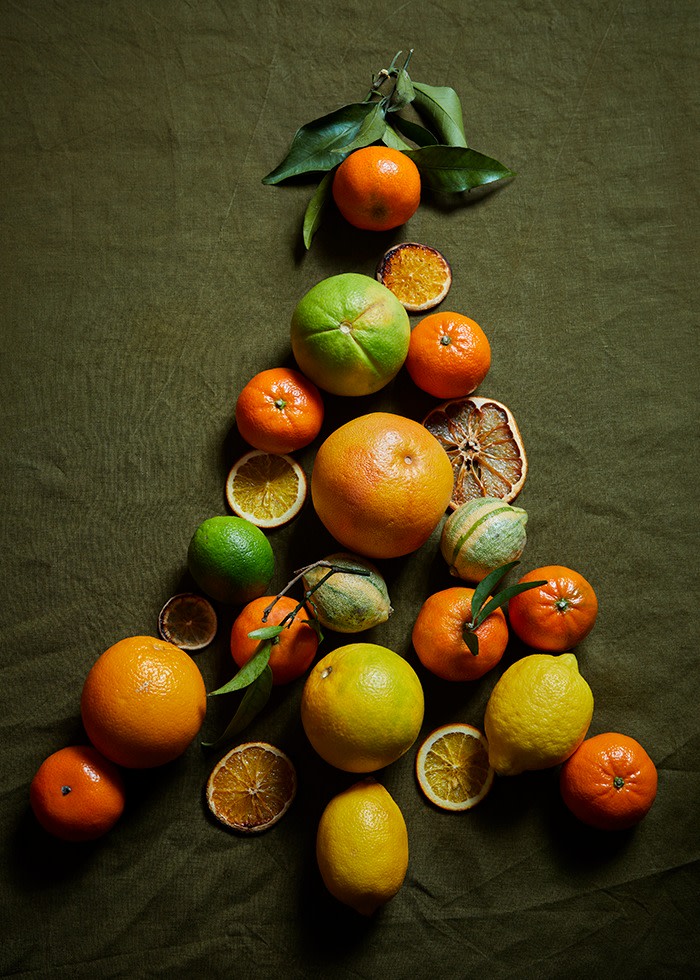
In the past, citrus fruit arrived in Britain just in time for Christmas, their scent hovering over the holidays like a haze. Now, we can get most of them all year round, but it’s still worth noting that a satsuma was something a child would get excited about, a rare treat, not so long ago. And they are still worth getting excited about in our age of hyper-abundance. They bring freshness to all that rich food, mouth-puckering sharpness to our drinks and more than a bit of bauble-y brightness to grey days and long nights.
These are our recipes for a citrus-scented holiday. We hope you get to enjoy them with the ones you love most, elective family or otherwise. And don’t forget the satsuma in the stocking. It’s just not Christmas without it.
Lemon fizz
Makes four cocktails
A fresh, sharp cocktail that will be a great start to an evening of plenty of food and booze. The mix can be made in advance and simply topped up with sparkling water.
Zest one of the lemons and set aside for the rim. Juice two lemons to produce 70ml of juice (you may need half of the third lemon too). Mix the juice with the 30g of sugar and bring to a boil. Remove and pour into a jug. Add four slices of lemon from the third lemon to the syrup, followed by the gin and the vodka. (This base can be kept in the fridge until serving).
Make the dredge for the glass by mixing the salt, demerara sugar and lemon zest. Rub a little lemon over the rim of the glass before dipping it into the dredge to form a ring.
Just before serving, add the sparkling water, put ice in each glass and top with the mixed cocktail.
Citrus and treacle-cured salmon
Serves four to six
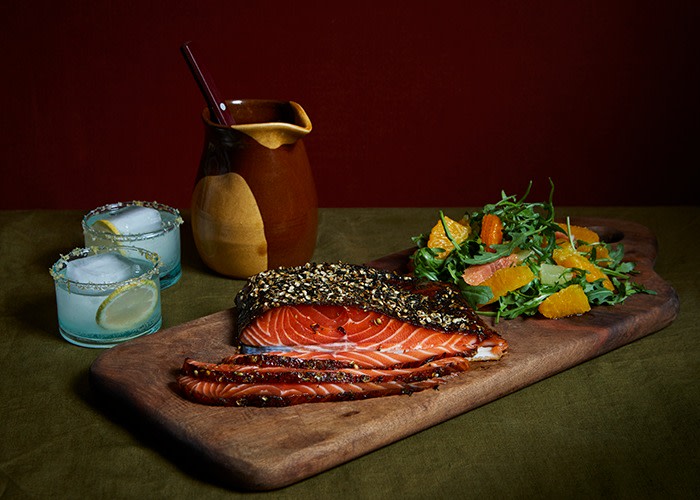
You will need to start this at least two days in advance, but for Christmas that’s a bonus because then you can simply slice and serve on the day.
First cure
Second cure
To serve (optional)
Place the salmon skin-side down on a folded piece of kitchen paper on a tray with some depth. Mix all the first-cure ingredients together, and sprinkle it evenly over the fish. Cover and place in the fridge overnight — for at least 12 hours and up to 24.
Remove from the fridge. Lift the fish out, and discard any liquid that has formed as well as the kitchen paper from under the fish. Rinse the tray, and put a new folded piece of paper down. Return the fish to the tray, and dab it dry with another piece of paper.
Drizzle the treacle all over the fish with a spoon so it’s entirely covered. (Don’t put one dollop on the fish then try to spread it as this will be very difficult.)
Sprinkle the extra chilli flakes if using, as well as the crushed coriander seeds and salt. Put a piece of cling film or baking paper directly on the top of the fish, and press down slightly to compress the topping. Return to the fridge for a further 12-24 hours before slicing thinly. Cut the salmon directly down towards the skin and, when you reach the skin, tilt the knife slightly so the cured salmon slice comes away from the skin. Allow two to three slices per person and serve with a salad of rocket and citrus dressed with a little olive oil, salt and pepper.
Gammon on a bed of clementine, sweet potatoes and cranberries
Serves six to eight, but any leftovers make for a great lunch the following day.
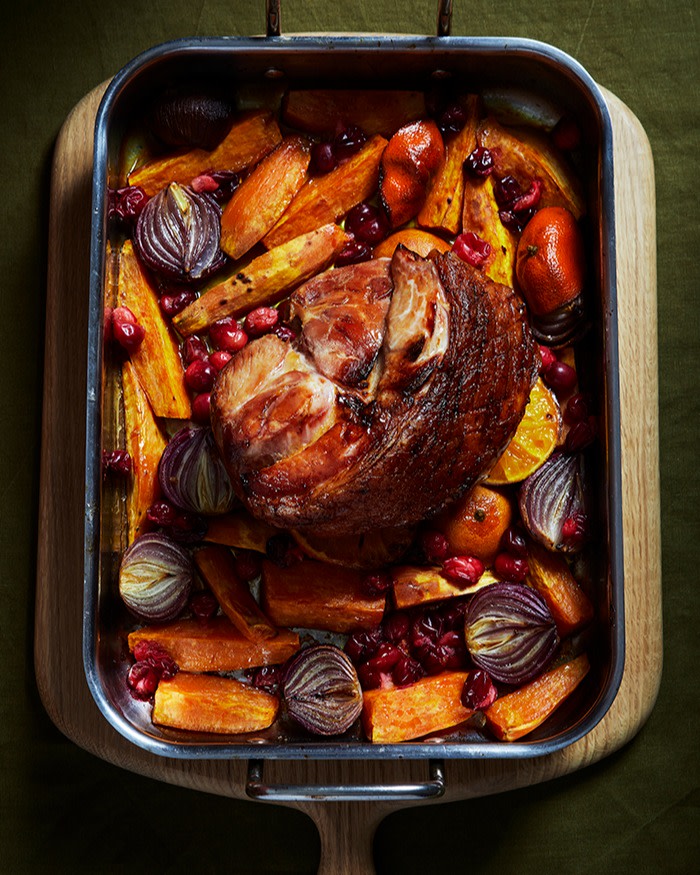
Not all gammons are created equal — and many still vary in instructions. We love a smoked and cured one, which doesn’t need soaking before cooking to remove salt, and this method of parboiling then roasting creates an easy, succulent meal. Nonetheless, ask your butcher (or check the instructions on the packet) if the one you buy does need soaking before cooking.
For the poaching liquid
For the roasting tray
Place the gammon in a pot that can hold it nicely and add all the poaching liquid ingredients. Cover with cold water to submerge the gammon and bring to a slow boil. Skim well to remove any foam. Reduce the heat to a low simmer. Semi-cover the pot, simmer for 40 minutes and carefully lift out the gammon. Leave the pot on the stove, increase the heat to a boil and reduce by half. Strain and set aside.
Prepare the roasting tray with the wedges of sweet potato, six halves of clementines (retain two halves to juice over later on) and the onion halves. Drizzle with olive oil and a little salt.
Cut off the string holding the gammon together (it will now keep its shape). Remove the thick brown layer of skin but keep the cap of fat on. Use a small knife to pull it away (it should come away easily). Score the remaining white cap of fat in a criss-cross pattern and add to the tray of vegetables as well as two ladles of the retained cooking liquid. Cover the tray with silver foil.
Heat your oven to 180C (fan assist). Place the covered tray in the oven for an hour. Remove carefully from the oven and take off the foil. Baste with any liquids that have formed in the tray. (If there aren’t any, use a little more of the cooking liquid to baste the meat.) Brush the fat side with the honey and squeeze the juice from the remaining clementine over the whole tray. Return to the oven for 15 minutes. Add the cranberries to the tray and roast for the final five minutes before serving.
Chocolate, grappa and clementine truffles
Makes 20 bite‑sized truffles
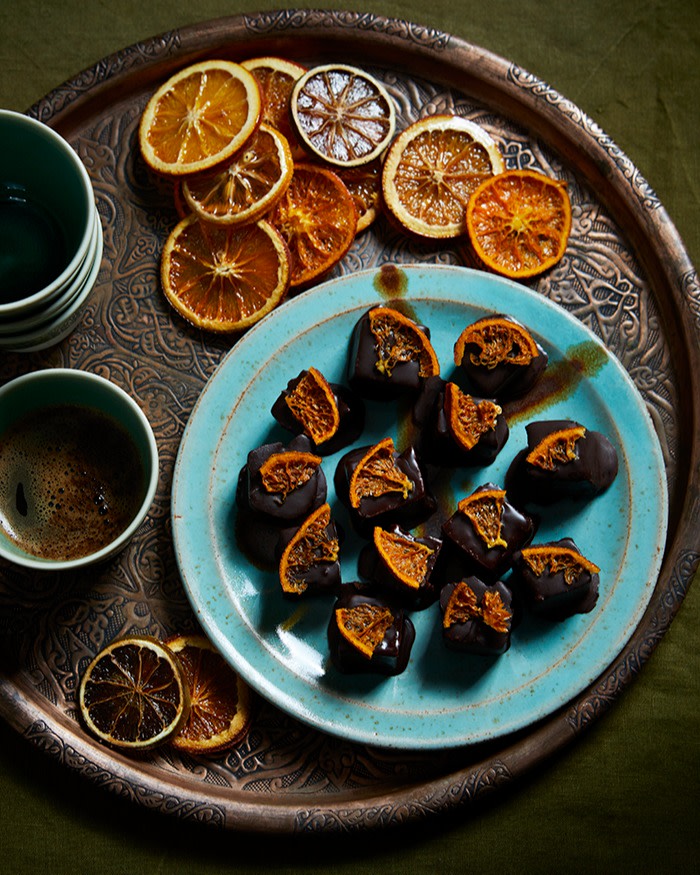
You will have cheese, of course, and there will be cake and pudding and panettone, maybe. But what you really want after the big meal is just one small but hyper-indulgent bite of something sweet.
For the truffles
Dipping (optional)
Break the chocolate up into small pieces, or chop using a serrated knife. Place in a bowl.
In a small saucepan, boil the cream and add the marmalade. Stir well and pour over the chocolate. Leave for 10 seconds and then whisk vigorously to combine to an even melted mass. Add the butter and zest and fold until combined and all the butter has melted. Then add the grappa — one tablespoon first, taste and see if you fancy the other.
Prepare a Tupperware tray about 10cm square and line it with a sheet of cling film or baking paper. Pour the chocolate mix into the container and tap the container on the table to flatten. Place in the fridge to chill for a couple of hours or overnight.
Turn out on to a chopping board, peel off the cling film or paper and, using a hot knife, cut into small cubes (4x5 grid) to form 20 pieces. Return to the fridge to chill.
If you are dipping them, melt the chocolate, add the oil, whisking continuously and pour into a mug or tumbler. Use a fork to dip the cubes one by one into the coating and then shake to remove excess chocolate. Put them on a fresh sheet of baking paper, top with pieces of candied peel and chill in the fridge until serving.
Alternatively, simply toss the cubes in plenty of cocoa powder before serving chilled at the table.
*Drying citrus slices
These can be used as decoration but are, of course, also edible and delicious.
Make a syrup from half a cup of sugar and half a cup of water, brought to a boil and chilled.
Slice whatever citrus you fancy, skin and all, into slices as thin as you can get.
Dip into the cooled syrup and place on a flat tray on some baking paper or ideally a silicone mat.
Place in the oven at 120C for about two hours until fully dry.
Remove one slice, put it on a cool surface and wait until it chills — it should go brittle and crispy. If not, bake for a little longer.
Email Sarit and Itamar at honeyandco@ft.com and follow them on Instagram @honeyandco
Follow @FTMag on Twitter to find out about our latest stories first.

Comments